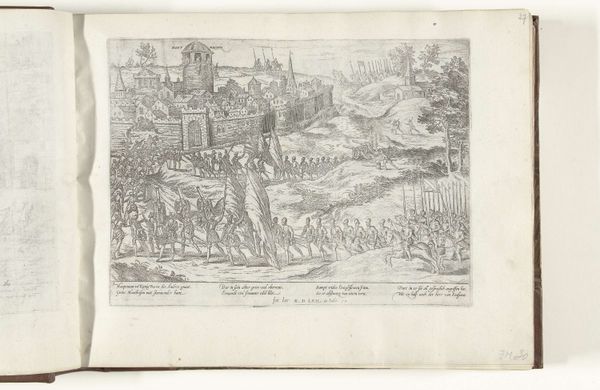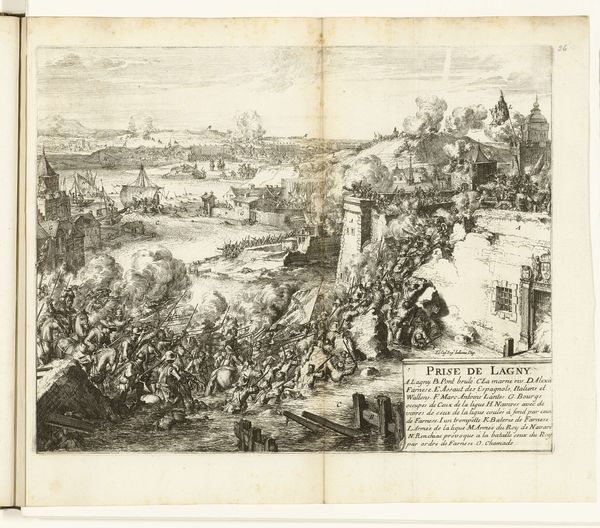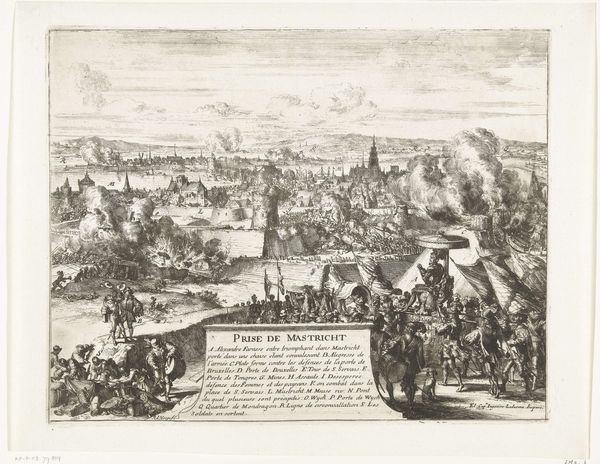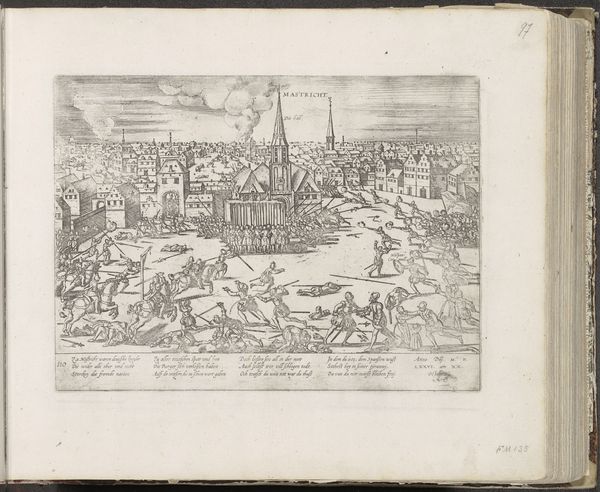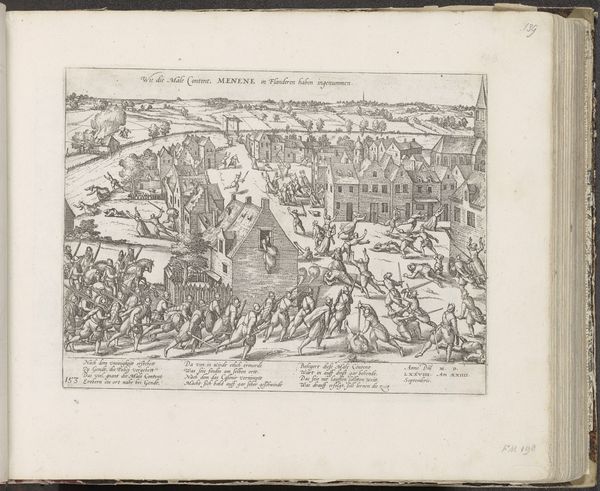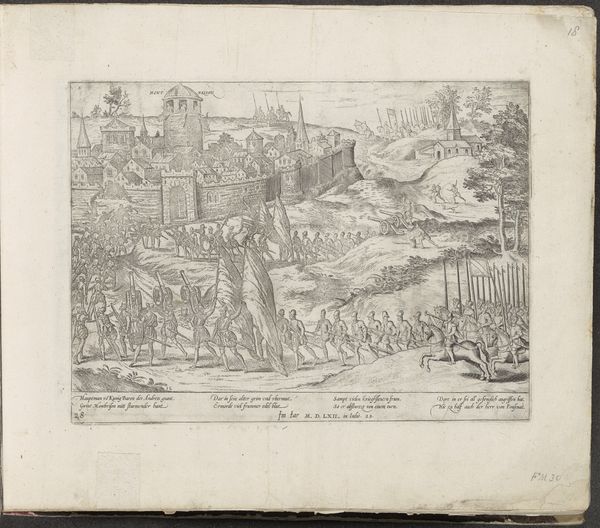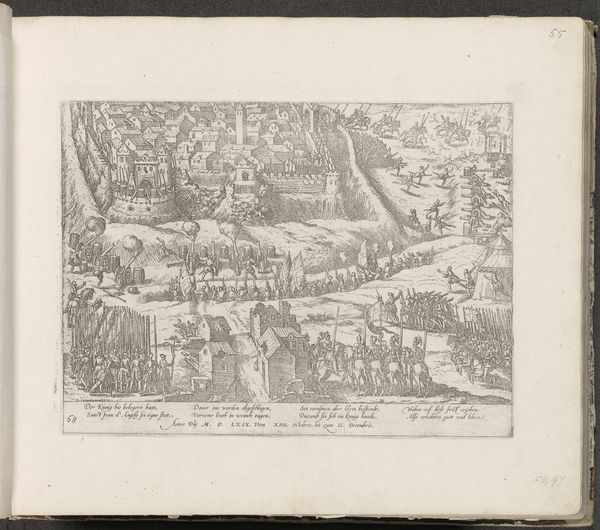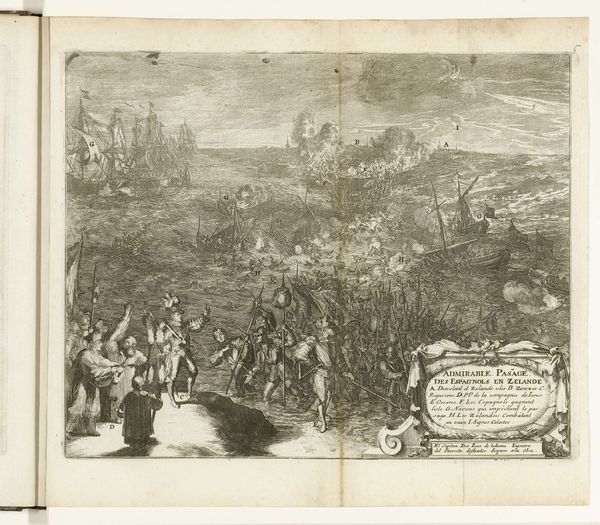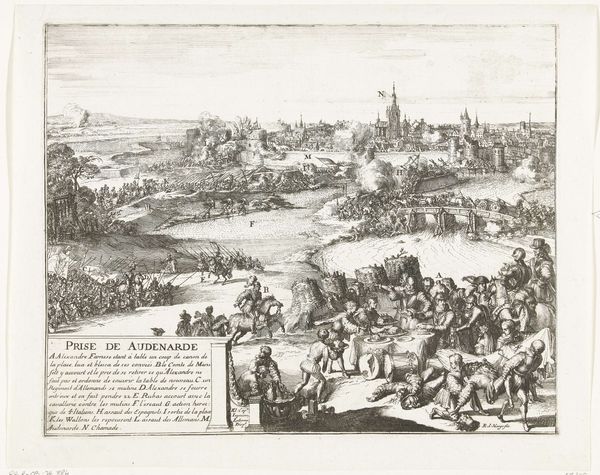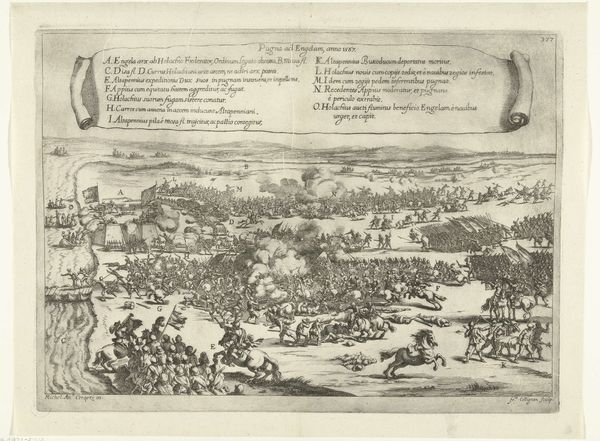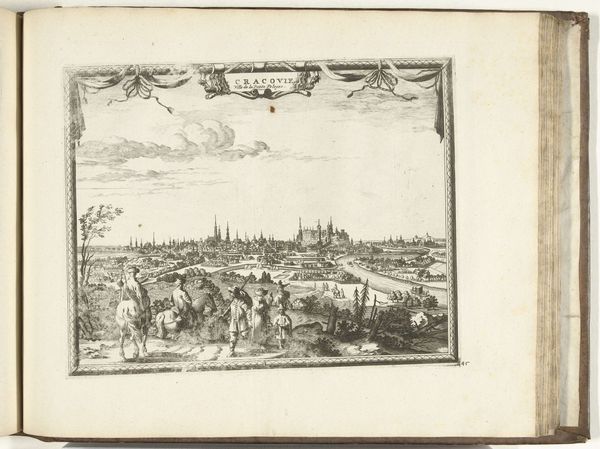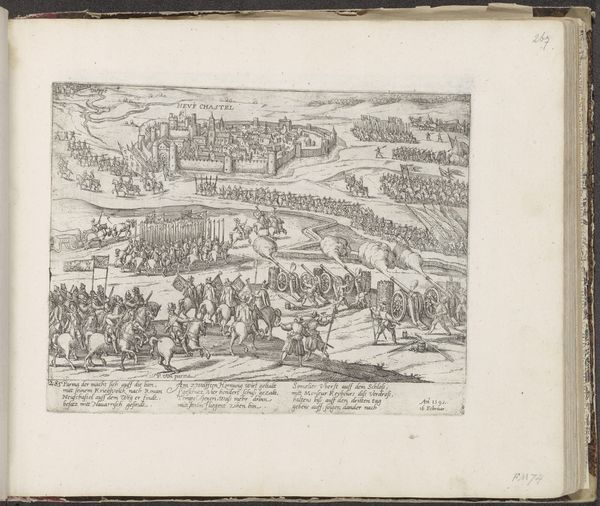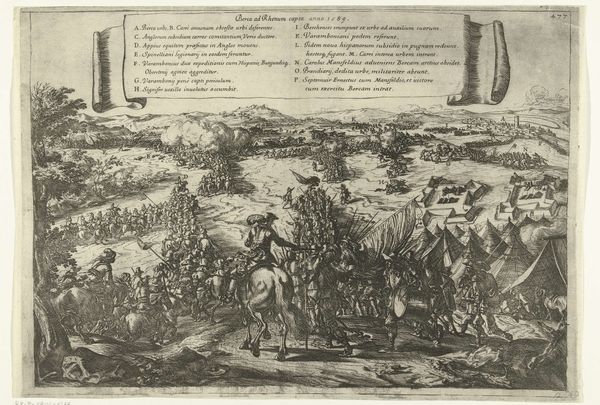
print, etching
#
baroque
# print
#
etching
#
landscape
#
history-painting
Dimensions: height 266 mm, width 336 mm
Copyright: Rijks Museum: Open Domain
Editor: So, this print, "Inname van Valenciennes, 1567," created sometime between 1670 and 1699 by Romeyn de Hooghe, captures the siege of Valenciennes. It's incredibly detailed. I'm immediately struck by how the chaos of the battle is juxtaposed with this almost serene cityscape in the background. What stories do you think these images are telling? Curator: The layering of the scene, chaotic foreground giving way to calm background, acts like a visual encoding. It tells of disrupted order versus enduring structure. Battles are temporal, aren't they? Cities…we hope for them to be lasting. The choice of Baroque style itself brings to mind dynamic emotional states. What of the symbols… do they say anything about power? Editor: You mean like, who is in power? The flags certainly feel symbolic, a show of dominance… Curator: Yes, consider the flags – they stake claim to a land, culture. The smoke from cannons may represent both destruction *and* purification… What memories might be triggered by viewing a scene like this? Especially those alive at the time? Editor: It feels… triumphal, but at a cost. Like a heavy, enforced order. And I never would have thought about that idea of the smoke also as purification; it helps me interpret that visual contrast as not just background scenery. Curator: Indeed. De Hooghe employs that interplay strategically, reminding us that memory, conflict, and victory are always deeply intertwined and always carry these ambivalent symbolic messages. Do you think a print like this serves just as historical document, or something more? Editor: More, definitely. It's a piece of propaganda almost, embedding the victors’ narrative visually. This was really eye-opening, looking at this not just as a scene, but a carrier of memory and intention. Curator: And that interplay of symbolic language invites viewers to do the very same thing centuries later: look beyond the literal and decode history's layers.
Comments
No comments
Be the first to comment and join the conversation on the ultimate creative platform.
